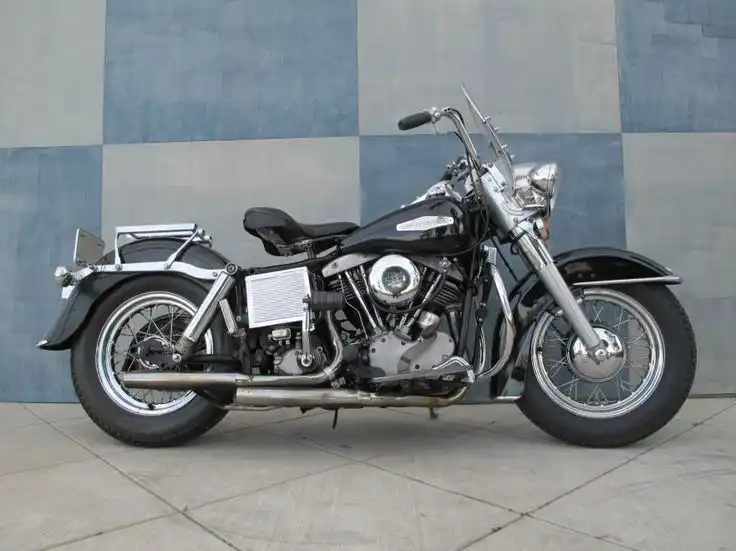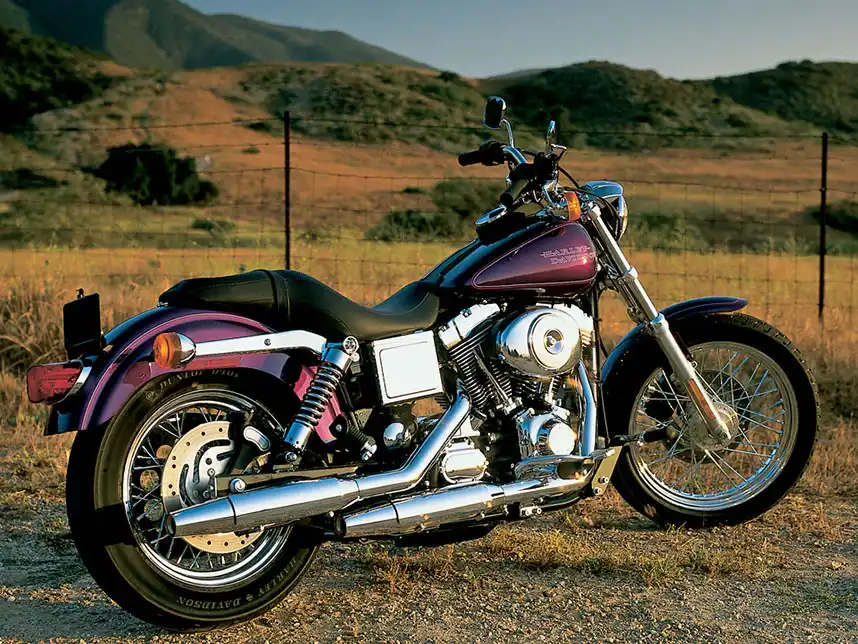When it comes to Harley-Davidson motorcycles, few topics spark as much passionate debate as the rivalry between the Shovelhead and Twin Cam engines. These two powerplants represent distinct eras in Harley history—each with its own devoted following, mechanical personality, and place in the hearts of riders.
The Shovelhead, with its unmistakable silhouette and raw, mechanical feel, evokes memories of classic American motorcycling from the late 1960s through the early 1980s. In contrast, the Twin Cam ushered in a new age of performance, reliability, and modern technology when it hit the scene in 1999, carrying Harley into the 21st century.
Choosing between the Shovelhead and Twin Cam isn’t just about picking an engine—it’s about embracing a philosophy of riding. Some riders are drawn to the hands-on, visceral experience of the Shovelhead, while others appreciate the refined power and convenience offered by the Twin Cam. In this article, we’ll take a deep dive into the design, features, and riding experiences of both engines, exploring what sets them apart and why each continues to inspire such fierce loyalty among Harley-Davidson enthusiasts.
Whether you’re a seasoned rider or simply fascinated by motorcycle history, understanding the Shovelhead vs. Twin Cam debate is essential to appreciating the soul of Harley-Davidson.
The Shovelhead: A Classic Harley-Davidson Icon
Ask any Harley-Davidson enthusiast to name a truly iconic engine, and chances are the Shovelhead will come up early in the conversation. Produced from 1966 to 1984, the Shovelhead engine is a symbol of a bygone era—one where motorcycles were raw, mechanical, and full of character. The engine gets its name from the distinctive rocker boxes, which resemble the back of a coal shovel. This quirky design detail became a visual signature and, over time, a badge of honor for those who appreciate classic American iron.
The Shovelhead was Harley’s answer to the need for more power and better performance in their big twin lineup. It featured aluminum-alloy heads, improved porting, and stronger valves and pistons compared to its predecessor, the Panhead. These changes gave the Shovelhead a healthy bump in horsepower, delivering about 60 hp at 5,500 rpm—a solid figure for its day.

But numbers only tell part of the story. The Shovelhead’s appeal was as much about feel as it was about performance. Its air-cooled, overhead valve design was simple and straightforward, making it approachable for riders who liked to get their hands dirty and tinker in the garage. There’s a certain satisfaction in knowing your machine inside and out, and the Shovelhead delivered that in spades.
Of course, no legend is without its flaws. The Shovelhead’s cooling system, with just ten fins, often struggled to keep the engine at a happy temperature, especially on hot days or during long rides. Oil leaks were almost a rite of passage—owners would joke about marking their territory wherever they parked.
And as the world moved to unleaded fuel, the Shovelhead’s original valve seats showed their age, wearing out faster than anyone would like. But for many, these quirks only added to the engine’s charm. Riding a Shovelhead wasn’t just about getting from point A to point B; it was about the journey, the maintenance, and the stories you collected along the way.
Shovelhead Features and Considerations
If there’s one thing the Shovelhead is known for, it’s mechanical simplicity. This engine was built in an era when motorcycles were meant to be worked on by their owners. With its straightforward design, the Shovelhead invited riders to roll up their sleeves and get involved. Customization was the name of the game, and the engine’s layout made it easy to tune, repair, or modify to suit your tastes. For those who love the hands-on aspect of motorcycling, the Shovelhead is pure gold.
Torque delivery is another hallmark of the Shovelhead. Thanks to its heavy flywheels, the engine produces a deep, satisfying thump and a sense of unstoppable momentum. Riders often say their Shovelhead “could climb a tree”—a playful exaggeration that speaks to the engine’s low-end grunt and robust construction. There’s a visceral quality to the way it delivers power, and it’s easy to see why so many riders fell in love with it.
But mechanical simplicity comes with its own set of challenges. The Shovelhead’s oiling system is a prime example. It’s not the most efficient design, and as a result, oil leaks and consumption are common. Overheating can be an issue, especially if you’re riding hard or stuck in traffic on a hot day. And when unleaded fuel became the norm, the original valve seats—designed for a different era—started to wear out quickly. Modern upgrades can address many of these issues, but there’s no denying that the Shovelhead demands more attention and care than newer engines.
Despite these challenges, the Shovelhead’s reputation has only grown over the years. Its raw, mechanical feel and unmistakable sound are celebrated by purists who value authenticity over refinement. For collectors and enthusiasts, the Shovelhead isn’t just an engine—it’s a piece of Harley-Davidson history, a link to a time when motorcycles were as much about personality as performance.
The Twin Cam: Harley’s Leap into Modernity
Fast forward to 1999, and Harley-Davidson was ready to shake things up with a brand-new engine: the Twin Cam. This engine, produced until 2017, marked a significant step forward for the company. The name says it all—the Twin Cam features two separate camshafts, one for intake and one for exhaust. This was a big change from the single-cam designs Harley had relied on for decades.
The Twin Cam was designed to address some of the reliability and performance issues that had cropped up in earlier engines. Harley beefed up the crankcase, improved the oiling system, and created a mounting scheme that let the transmission case bolt directly to the engine. All of these changes made the engine more durable and easier to maintain, which was great news for riders who wanted to spend more time on the road and less time in the garage.
Performance was a major focus for the Twin Cam. Thanks to better airflow, combustion efficiency, and modern materials, the engine delivered more horsepower and torque than its predecessors. Later versions, like the Twin Cam 96, pushed displacement even further, giving riders more power for touring and highway cruising. Harley also introduced fuel injection, electronic ignition, and, in some models, liquid-cooled heads. These advances brought the Twin Cam into the modern age, making it a reliable companion for long rides and daily commutes alike.
Twin Cam Features and Considerations
The dual camshaft design of the Twin Cam was a game-changer. By allowing for more precise valve timing and improved engine breathing, Harley was able to deliver smoother power, better efficiency, and a broader torque curve. The result? An engine that feels lively and responsive, whether you’re cruising down the highway or carving up backroads.

The Twin Cam’s advanced oiling system solved many of the leaks and overheating issues that had plagued earlier engines. Riders could finally enjoy a Harley that didn’t mark its territory everywhere it went. The addition of fuel injection and electronic ignition meant more consistent performance, easier cold starts, and less time spent fiddling with carburetors or points. The engine was built to be tough, with stronger components designed to handle the demands of long-distance touring and spirited riding.
But with all this refinement came a trade-off. Some Harley purists argue that the Twin Cam lacks the “soul” of older engines like the Shovelhead. Where the Shovelhead is raw and mechanical, the Twin Cam is smooth and predictable. For some, this is a welcome improvement; for others, it’s a loss of the intangible qualities that make a Harley feel truly alive. The debate between character and convenience is one that continues to play out in garages and at bike nights across the country.
Key Differences: Shovelhead vs. Twin Cam
At the heart of the Shovelhead vs. Twin Cam debate are some fundamental differences in design and philosophy. The Shovelhead uses a single camshaft to operate both intake and exhaust valves. It’s a simple, time-tested approach, but it does limit the engine’s potential for fine-tuned performance. The Twin Cam, true to its name, uses two camshafts—one for intake, one for exhaust. This allows for more precise control over valve timing and engine breathing, translating into better performance and efficiency.
When it comes to power, the Twin Cam is the clear winner. Improved airflow, combustion efficiency, and modern materials give it higher horsepower and torque across the board. The Twin Cam’s broader, more usable powerband makes it a great choice for both spirited riding and long-distance touring. The Shovelhead, while no slouch, is more limited by its older design and mechanical constraints.
Reliability and maintenance are also key points of difference. The Shovelhead’s reputation for oil leaks, overheating, and frequent adjustments is well-earned. It’s an engine that demands attention and rewards those who are willing to put in the work. The Twin Cam, on the other hand, is built for reliability. Its advanced oiling system, electronic ignition, and fuel injection mean less time in the garage and more time on the road. For riders who want a dependable daily rider or a machine for cross-country trips, the Twin Cam is hard to beat.
Technology is another area where the Twin Cam pulls ahead. Features like fuel injection, electronic ignition, and, in some models, liquid-cooled heads make it a thoroughly modern engine. The Shovelhead, by contrast, is a product of its time—carbureted, air-cooled, and mechanically ignited. For some, these old-school features are part of the charm; for others, they’re a headache best left in the past.
Riding Experience: Raw vs. Refined
Perhaps the most important difference between the Shovelhead and Twin Cam is the way they feel on the road. The Shovelhead is all about raw, unfiltered connection. Every vibration, every mechanical sound, every quirk is part of the experience. Riding a Shovelhead is a hands-on affair—one that rewards skill, patience, and a willingness to get your hands dirty. It’s a motorcycle for those who love the journey as much as the destination.
The Twin Cam, by contrast, is smooth and refined. Advanced engineering reduces vibrations, improves throttle response, and minimizes the need for constant adjustments. It’s a bike you can hop on and ride across the country without worrying about oil leaks or overheating. For riders who value comfort, reliability, and modern amenities, the Twin Cam is a dream come true. But for some, all that polish comes at the expense of character.
This tension between tradition and innovation is at the heart of the Shovelhead vs. Twin Cam debate. The Shovelhead represents a time when motorcycles were as much about personality as performance. The Twin Cam is a product of progress, offering the best of both worlds—classic Harley style with modern reliability.
Conclusion: Choosing Between Legend and Progress
So, which engine is right for you? The answer depends on what you value most in a motorcycle. If you crave a direct, unfiltered connection to Harley-Davidson’s heritage—with all the joys and frustrations that come with it—the Shovelhead is an enduring classic. It’s a machine that rewards attention and care, offering a riding experience that’s as much about the journey as the destination.
If, on the other hand, you want a smoother, more reliable ride that still captures the spirit of the brand, the Twin Cam is a worthy successor. Its advanced engineering, improved performance, and rock-solid reliability make it a great choice for modern riders who want to spend more time riding and less time wrenching.
In the end, both engines have left their mark on the world of motorcycling. The Shovelhead and Twin Cam each offer something unique, ensuring that the debate—and the passion it inspires—will continue for years to come. Whether you’re drawn to the raw character of the Shovelhead or the refined power of the Twin Cam, you’re part of a proud tradition that celebrates the freedom of the open road.